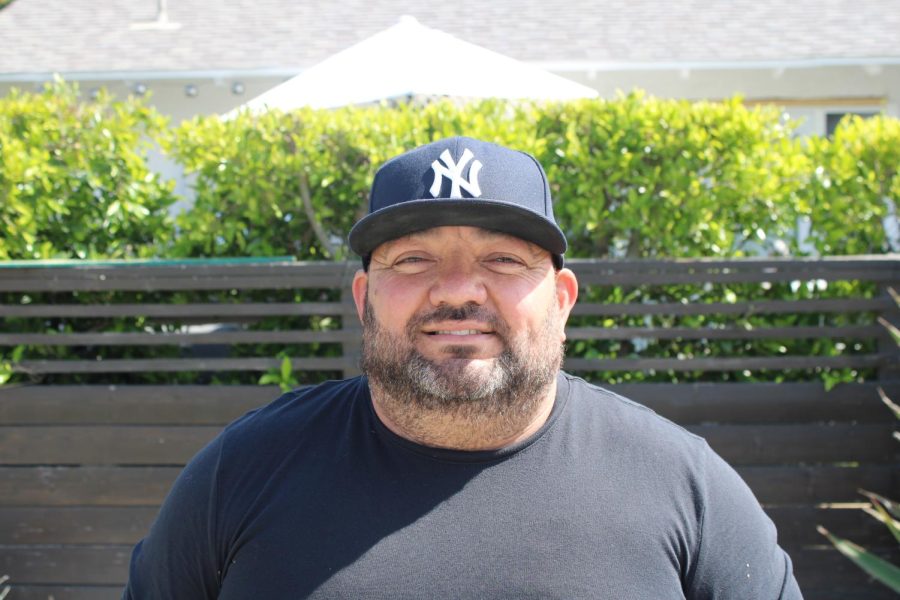The evolution of music is an ever-progressing chain in which the new style builds on what the predecessor left off on as well as a constant battle to out-do those that came before.
“We find ways to ‘remix’ the past,” said Ventura College music Professor Bruce Hardy, explaining further that rock first began with a gradual loosening up in the public’s attitudes towards race and language.
Hardy began teaching his “History of Rock ‘n’ Roll” class at VC around 1977 when he was set to teach jazz and rock in one course. However, only the jazz course was accepted until the “Ventura College Press” attacked the music department for being “irrelevant.” According to Hardy, this led to the creation of the rock class. In 1982, Hardy played the Sex Pistols’ “Anarchy in the UK” in class. However, the lyrics were too much for the audience. He did not teach the class again until the early 1990s.
Over time, certain words became less shocking to the public, which allowed musicians to not only be more explicit, but criticize their government.
“Once upon a time, 1930’s to 1960, a protest would be silenced by being accused of being a communist,” Hardy said. “Once that accusation was laughed at and made fun of, the door was open to be criticized of anything. Similarly, the language changed so that anything was allowed.”
Perhaps more important to the evolution of rock was the changing racial paradigms of the 50’s and 60’s.
Rock ‘n’ roll diverged from the rhythm and blues, a style then heavily associated with African-American musicians, whereas rock ‘n’ roll tended to have white performers, such as Elvis Presley and Buddy Holly.
From 1955 to 1959, rock ‘n’ roll held a distinct blues emphasis, but was a separate sound from R&B, which Chuck Berry and Little Richard pioneered. They were the first generation of rock ‘n’ roll, the ones that brought in the specialized beat and the rock guitar to the scene.
Presley is commonly seen as the creator of rock ‘n’ roll, but for Hardy, he didn’t seem to fit the part.
“It’s funny because he’s the one I least associate with rock ‘n’ roll,” Hardy said. “He’s a symbol of rock ‘n’ roll but he acts in all these movies, but seldom performs rock ‘n’ roll.”
Music Performance major Steven Cook, 18, feels that Presley was a major figure in rock ‘n’ roll, especially with the structure of his songwriting.
“Almost everyone is influenced by him when you look at The Beatles, the Stones and even up to today,” he said. “He brought more pop-oriented rhythms and melodies.”
“The king of rock ‘n’ roll” only came so far. Presley managed to make rock a commercial success, as well as creating a unique look and sound for the music. Buddy Holly, in his short career, took rock ‘n’ roll a step further by experimenting with new, more complicated rhythmic patterns.
By 1959, however, the end seemed near for rock ‘n’ roll with Presley in the army, Holly tragically killed and others moved to the back burners. In 1963, record companies took over rock music, keeping the rock beat and adding the “love song” lyrics. This was the rise of “pop” music.
On Feb. 7, 1964, the Beatles landed in America, ushering in a new era for the once down-and-out rock ‘n’ roll.
“They were a very likable quartet,” Hardy said. “They were professional and they gave great press conferences.”
Following in The Beatles’ success came the Rolling Stones, The Who and The Animals from the U.K. as well.
During the same time, the folk movement led by Bob Dylan, became increasingly important influencing rock’s evolution, taking it beyond the popular love song and into true social and political commentary.
“The ‘66 to ‘67 period is when rock became art,” said Hardy. “Prior to that, it was the boy meets girl thing.”
At some point during this time, Dylan and The Beatles met. Dylan convinced John Lennon to write more serious lyrics while introducing the Fab Four to drugs. In this era of musical progress, the leaders in rock ‘n’ roll all had one similar adaptation: the hippie aesthetic.
The hippie aesthetic held four main characteristics, according to Hardy. First, the piece had to be something one could listen to over and over. Second, the words had to be serious. Third, the music had to be recorded in a studio; and finally, there had to be a “virtuosic” element, or a mastery of their musical craft in the piece.
Through the 1980’s, the hippie aesthetic was the driving force of rock innovation, seen in the music of Pink Floyd, Deep Purple, Led Zeppelin, and even some in Nirvana.
Since The Beatles were able to change their music, whilst not alienating their fan base, they were able to stay popular until 1969, when they actually suffered from “too much success,” according to Hardy. Lennon and McCartney, particularly, wanted to pursue solo careers and Yoko Ono was never a source of unity for the band.
By 1970, The Beatles ceased to be. But the rock landscape had changed again with the rise of FM radio. Now, albums could be played in their entirety, ushering in the age of Led Zeppelin, a group that prided themselves on their rough sound and Jimmy Page’s guitar virtuosity.
Zeppelin enjoyed enormous success, despite an initial bad review from Rolling Stone magazine.
“They learned to eat their words,” Hardy said.
Meanwhile, in late 70’s underground New York, punk rock and the Sex Pistols began to challenge the dominant rock ‘n’ roll genre. Hardy described the punk movement as a look back to rock’s earliest roots, free from solos, heavy production effects and concept albums, with a focus on a fast-paced beat with a short, repetitive message.
The Sex Pistols were so big at one point, Hardy said, “Everytime the Sex Pistols played, you got six to seven bands starting up the next day as a result of their influence.”
Punk didn’t last long, however, as the genre began to fade from the scene until 1980 when it completely left the spotlight.
“It wasn’t a musical thing so much as a publicity thing,” said Hardy. “Everything went underground after that.”
Drawing from the fast-pace of punk rock, 1980’s musicians had something new in store: heavy metal. At the same time, MTV invaded televisions everywhere, creating a divergence in the species of musician.
“There’s a difference between the heavy metal bands that went on MTV and those that didn’t,” Hardy said. “MTV bands were watered down from those of England.”
Aside from heavy metal, the 80’s saw the rise of pop music with Michael Jackson. Hardy said Jackson and his “Thriller” album overcame lingering racial prejudice by appearing on MTV after some controversy.
With MTV and Michael Jackson at their paragon, music became a true marketing machine, a consumable object. There to feed on this market was Kurt Cobain and Nirvana, the grunge rock group that echoed from 1991 with “Smells Like Teen Spirit” to Cobain’s death in 1994.
“Smells Like Teen Spirit” became an anthem for kids with the hopelessness of the piece, Hardy said. Cobain’s pitiful character was able to tap into teenage angst that was brought out in the 90’s as a result of Nirvana’s music.
Tyson Baker, 18, an undecided major, disagrees with Cobain’s status as a teen figurehead.
“I like Nirvana’s music, I just wasn’t a big fan of Cobain’s attitude,” he said.
After Nirvana, it is difficult to say exactly what bands or musicians are at the forefront of musical evolution.
“I think Radiohead is a very good band,” Hardy said. “They are still going.”
He also believes the Foo Fighters, Red Hot Chili Peppers, and the White Stripes might still be big, while still keeping an ear for the old favorites.
“The Stones still draw a crowd,” Hardy said. “Even though they come out in wheelchairs.”







